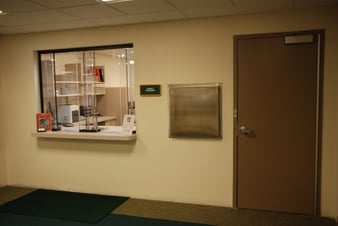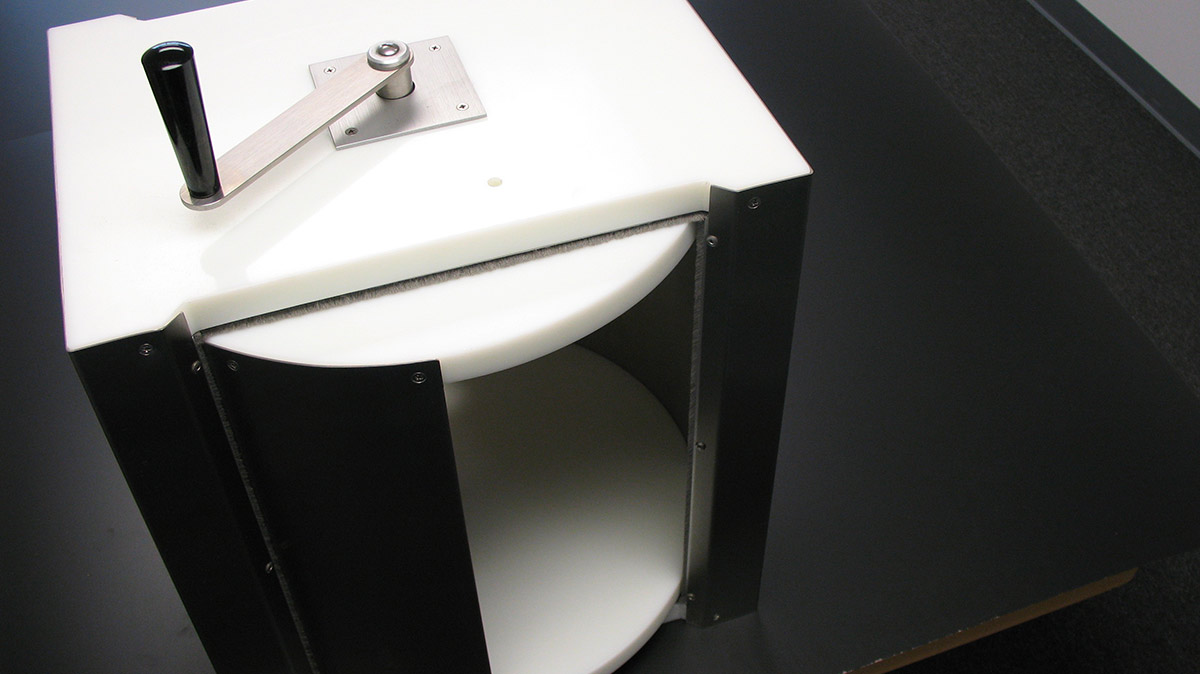 Those inexperienced in ballistic systems design often miss details, both large and small, even on seemingly straightforward projects. For example, a basic walk-up window–which can be as simple as a framed piece of ballistic acrylic and a transaction drawer–can turn into an installation nightmare without proper forethought.
Those inexperienced in ballistic systems design often miss details, both large and small, even on seemingly straightforward projects. For example, a basic walk-up window–which can be as simple as a framed piece of ballistic acrylic and a transaction drawer–can turn into an installation nightmare without proper forethought.
While nothing replaces consulting with an experienced bulletproof company, these two tips will save you a lot of grief down the road:
- DO assess business practices!
- DON’T ignore structural realities!
TRANSACTION DRAWERS AND BUSINESS PRACTICES
Before starting any bullet proof security project–large or small–business owners and designers need to assess the actual daily business practices in that location. Ask two key questions:
1. How many people are served?
2. What objects will need to be passed through the barrier?
In selecting a transaction drawer the overall volume of visitors served over the course of a full business day isn’t necessarily that important. What’s significant, both for staff and customers, is the congestion at any given time. Despite gobbling up counter space, a large rotary suzanne is quicker to operate, and demands less clearance, than a traditional transaction drawer or large package passer. No one wants to get smacked in the knee by a transaction drawer while waiting their turn.
The second question may sound absurd, but it’s important to consider what actually needs to be passed. When asked, business owners often focus on the most common items–cash, receipts, or business mail–without considering items that are somewhat less common, but still need to be passed frequently. These may include packages or supply deliveries, large files of legal-sized paperwork, or schematics stored in tubes. Lawyers, for example, regularly receive case files–which can run into the thousands of pages–in so-called “bankers boxes,” which measure 12” by 15” by 10”.
“It may be hard to believe,” Total Security Solutions vice president Jim Richards explains, “But I’ve seen situations where an architect and end-user design something, but the object they need to pass can’t actually fit in the transaction drawer they’ve designed their system around.”
STRUCTURAL REALITIES OF TRANSACTION DRAWERS
Transaction drawers are made from UL-rated bullet resistant stainless steel. While smaller models can be mounted in existing interior walls without much fuss, many of the larger package passers weigh over 140 pounds. Depending on the building’s design, this may necessitate additional reinforcement and blocking, or a reconsideration of the configuration of counter space and access points.
When planning a bullet proof system that includes a transaction drawer, it’s important to take into account the limitations of the existing structure. Will workers be able to comfortably load items into the transaction drawer? Will customers be able to retrieve them? Many models of transaction drawer require clearance on both sides of the barrier, while others are accessed on the secure side via a flip-top lid. Have both customers and workers been left enough counter space to do their business? Taking a few minutes to role play common worker-customer transactions, and making sure the transaction drawer you want will work in the space you have, is a great investment.
Next Steps
- Read more about transaction drawers and transaction windows
- Check out our selection of pass-through drawers and quick ship products

